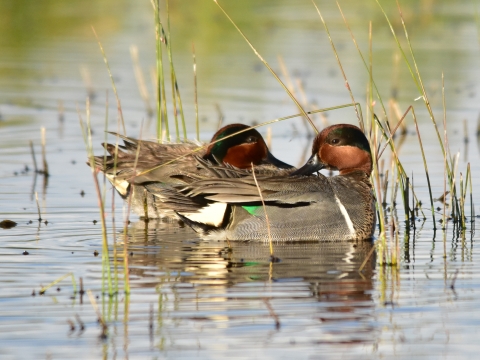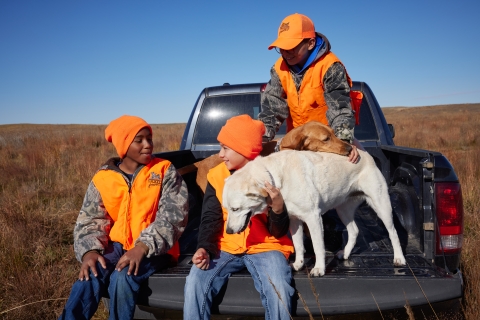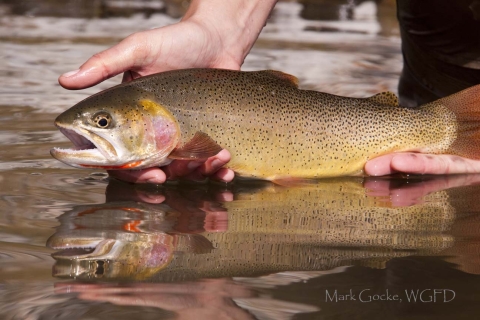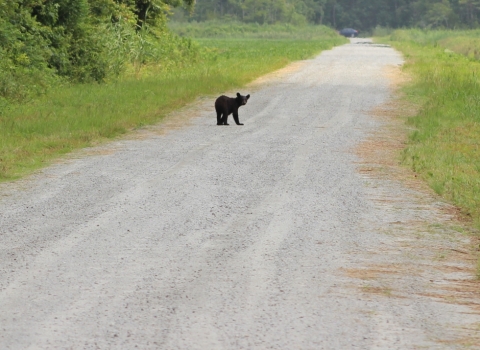One of the best things about living in Idaho is access to public lands and waters. State parks, wildlife management areas, and forests as well as national parks, forests, and wildlife refuges are just some of the options for outdoor recreation and hunting and fishing. However, it is rare to find a place where you can enjoy all your favorite nature-based past-times. At Minidoka National Wildlife Refuge, along the Snake River near Rupert, you can take part in almost every outdoor sport or activity beloved by generations of Idahoans. The refuge includes over 24,000 acres of high desert, basalt outcropping, and riverbank and lakeside accesses. From boating to hunting, you really can choose your own adventure at Minidoka.
Every national wildlife refuge national wildlife refuge
A national wildlife refuge is typically a contiguous area of land and water managed by the U.S. Fish and Wildlife Service for the conservation and, where appropriate, restoration of fish, wildlife and plant resources and their habitats for the benefit of present and future generations of Americans.
Learn more about national wildlife refuge was created for a special purpose. Some were created to protect migratory birds, others to protect threatened or endangered species or unique habitats, while others fulfill other important conservation purposes. All activities allowed on refuges are evaluated to make sure each activity will not conflict with the reason the refuge was founded, as required by Congress. Refuges generate billions of dollars in economic output and wages, as well as local, county, and state tax revenue, key contributions to the trillion-dollar outdoor recreation industry.
Minidoka National Wildlife Refuge was established in 1909 to protect migratory and native birds. The U.S. Fish and Wildlife Service manages the refuge and works with other federal and state agencies to manage resources within the refuge boundary. The U.S. Bureau of Reclamation operates the Minidoka Dam and power plant, and controls the water levels, in the reservoir, Lake Walcott. The Idaho Department of Parks and Recreation manages Lake Walcott State Park, a 30-acre park near the dam that offers campgrounds, picnic areas, a disc golf course, cabins, and a boat ramp.
In the past 10 years, there have been many changes in management that have benefitted the community and wildlife and their habitat. The refuge has opened additional areas to hunting, expanded the boating season, and improved bank fishing and hunting access. Additionally, the reservoir is no longer drawn down in the winter, and other habitat and infrastructure improvements have been made. For example, the refuge has cleared miles of bank access, allowing visitors, hunters, and anglers than ever before.
Plan Your Trip
Almost 100,000 people visit the refuge every year. With a wealth of recreational opportunities, we’ve highlighted a few as you plan your visit. Mix-and-match and make each trip to the refuge your own adventure!
Hunting
For neighbors, the refuge is a favorite hunting spot. Generations of folks have harvested green-winged teal, goldeneye, and other waterfowl and migratory birds as well as pheasants, grey partridge, and other upland game birds. Working with Idaho Department of Fish and Game, the refuge has expanded hunting opportunities such as the recently opened Raft River Hunt Unit to the west of Lake Walcott near Raft River. The refuge’s 362-acre Unit 12 is open to hunting of all state game species, including mule deer, elk, upland game and migratory birds. You can use this refuge map to identify where which animals can be harvested. Early in the season is the best time for a variety of ducks and Canada goose, while later in the season can be great for goldeneye and mallard ducks. For hunters with a furry companion, dogs are welcome at the refuge.
All state laws and bag limits apply while hunting on the refuge, and make sure you have all required state licenses and tags - and a Duck Stamp if hunting waterfowl. Proceeds from the sale of the stamp support the purchase of vital habitat or conservation easements to benefit future generations of Americans. The stamp is just one way hunters support conservation and future generations of hunters. The Pittman-Robertson Act placed a small revenue tax on hunt related items that is sent to state wildlife agencies to be used for wildlife conservation projects, hunter education, and outdoor recreation access. Every time you hunt at a refuge – or on any public lands – you are also making sure future generations of hunters will get to experience the satisfaction of a successful harvest.
Fishing
Lake Walcott is a reservoir formed when the Minidoka Dam, the first berm dam in the country and the first dam on the Snake River in Idaho, was built in 1909. The refuge has worked with Idaho Fish and Game Department to expand fishing seasons; the lake today is a destination for area fisherman, boasting a multitude of fish species. From sturgeon to sunfish, you can spend all day fishing from your boat or focusing on bass and other species from the bank. There are nearly five miles of accessible shoreline and boat ramps are available at Lake Walcott State Park if you would like to launch a boat, canoe, kayak, or even float tube. America’s anglers are essential to conserving and expanding opportunities to fish on public lands. The Dingell-Johnson Act placed a small revenue tax on fishing related purchases which supports the restoration of sportfish populations and their habitats by state fish and wildlife agencies. Before traveling to the refuge, make sure you review all required state licenses, tags, and bag limits. The Idaho Fish and Game Department has a helpful planner online.
Hiking
Lake Walcott State Park offers approximately five miles of paved trails and roads to hike and observe birds and other wildlife. Just over a mile, a "natural" trail begins behind the interpretive kiosk at the east end of the boat ramps within the state park, the trail leads out along the shore of Lake Walcott. This trail provides benches for resting and enjoying nature as well as interpretive signs to learn about the local area and wildlife. The refuge is open to foot traffic throughout the year, even on those roads that are closed to vehicles through the winter and early spring to protect wildlife seeking sanctuary.
Birding
Early morning and evening are generally best for all wildlife-watching, including bird-watching (or birding depending on your vernacular preference). Over 235 species of birds have been spotted using the refuge. A variety of songbirds can be spotted at the Tule Island access near the Cold Water Interchange as well as Lake Walcott State Park. The spillway area below the dam and the Snake River are also good viewing areas. A bird checklist is available at refuge headquarters or on the refuge website. The springtime brings thousands of migrating birds and waterfowl, including snow geese, grebes, and loons. Large rookeries for great blue and black crowned herons boast fledglings in late spring. Summer resident white pelicans will be nesting and western and Clark’s grebes dance across the water. Visiting birds head south in the fall and others use the refuge as a stopover site on their own way to warmer climes.
Whatever activities you choose when visiting the refuge, you can use the refuge website to plan ahead to make sure you are properly equipped for your visit and the season. The refuge is open year-round, though some roads are seasonally closed to protect wildlife. Vehicle travel is limited, and some roads are suitable only for high clearance and four-wheel drive vehicles. We hope to see you soon enjoying your public lands and waters!










